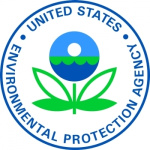- Industry: Government
- Number of terms: 11955
- Number of blossaries: 0
- Company Profile:
U.S. Environmental Protection Agency (EPA) is a federal agency responsible for the development and enforcement of regulations for human health and environment protection. The agency researches and sets standards for environmental programs and delegates. It was founded in 1970 following the proposal ...
Unwanted materials produced in or eliminated from an industrial operation and categorized under a variety of headings, such as liquid wastes, sludge, solid wastes, and hazardous wastes.
Industry:Agricultural chemicals
Involves pesticides applied by professional applicators (by owner/operators/employees and custom/commercial applicators) to industrial, commercial and governmental facilities, buildings, sites, and land; plus custom/commercial applications to homes and gardens, including lawns. May also be referred to as “professional market” for pesticides.
Industry:Agricultural chemicals
Involves pesticides applied by professional applicators (by owner/operators/employees and custom/commercial applicators) to industrial, commercial and governmental facilities, buildings, sites, and land; plus custom/commercial applications to homes and gardens, including lawns. May also be referred to as “professional market” for pesticides.
Industry:Agricultural chemicals
Substances that are not "active," such as water, petroleum distillates, talc, corn meal, or soaps. When discussing pesticides, inert ingredients do not attack a particular pest, but some are chemically or biologically active, causing health and environmental problems.
Industry:Agricultural chemicals
A pesticide compound specifically used to kill or prevent the growth of insects.
Industry:Agricultural chemicals
Food that has been briefly exposed to radioactivity (usually gamma rays) to kill insects, bacteria, and mold. Irradiated food can be stored without refrigeration or chemical preservatives and has a long "shelf life."
Industry:Agricultural chemicals
A substance that can cause irritation of the skin, eyes, or respiratory system. An irritant can cause an acute effect from a single high-level exposure, or chronic effects from repeated, low-level exposures. Some examples of irritants are chlorine, nitric acid, and various pesticides.
Industry:Agricultural chemicals
A shallow, artificial treatment pond where sunlight, bacterial action, and oxygen work to purify wastewater; a stabilization pond. An aerated lagoon is a treatment pond that uses oxygen to speed up the natural process of biological decomposition of organic wastes. A lagoon is regulated as a point source under the Clean Water Act if there is a direct surface water discharge. Some lagoons that discharge into ground water also are regulated if they have a direct hydrogeologic connection to surface water. In other areas, lagoons were historically used to dump various liquid, solid, and hazardous wastes from manufacturing or industrial processes. These wastes typically flooded and polluted surrounding environs or seeped underground. Such lagoons are now regulated under RCRA but some must be cleaned up under Superfund.
Industry:Agricultural chemicals
A method for final disposal of solid waste on land. The refuse is spread and compacted and a cover of soil applied so that effects on the environment (including public health and safety) are minimized. Under current regulations, landfills are required to have liners and leachate treatment systems to prevent contamination of ground water and surface waters. An industrial landfill disposes of non-hazardous industrial wastes. A municipal landfill disposes of domestic waste including garbage, paper, etc. This waste may include toxins that are used in the home, such as insect sprays and powders, engine oil, paints, solvents, and weed killers.
Industry:Agricultural chemicals
